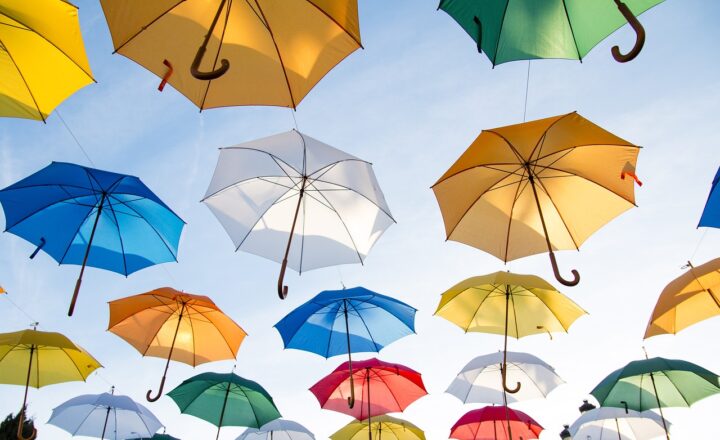The Most Unusual Sculptures That Double as Functional Spaces
November 17, 2024

Art has a way of transcending boundaries, and in recent years, we have seen innovative sculptures that serve a dual purpose: they are not only visually captivating but also functional spaces. These unusual sculptures redefine how we think about art and architecture, not merely as separate entities but as harmoniously intertwined forms that enhance our living and social environments. In this article, we will explore some of the most creative sculptures that allow us to experience art in practicable ways, from public parks to dynamic urban landscapes.
1. The Sea organ, Zadar, Croatia
Located in the vibrant coastal city of Zadar, Croatia, the Sea Organ is a fascinating blend of art and functionality. Designed by architect Nikola Bašić, this unique masterpiece consists of a series of large steps leading down into the sea. As the waves hit the steps, air is pushed through a series of tubes that create a beautiful, melodic sound, akin to playing an enchanting organ.
The Sea Organ does not just serve as a functional space; it creates a communal area where locals and tourists alike gather to witness the mesmerizing musical play produced by nature. This innovative sculpture redefines public space, encouraging people to experience sound art while enjoying the breathtaking Adriatic sunset.
2. The Big Piano, FAO Schwarz, New York City
When you think of a piano, you might envision an elegant instrument found in concert halls, but the Big Piano at FAO Schwarz brings it to life in a wholly unexpected way. This enormous and interactive sculpture allows visitors to create music through playful footwork on its oversized keys, turning both children and adults into childlike musicians.
Created in 1982 by designer Jeffrey W. W. Uh, this sculpture doubles as an interactive musical experience, encouraging creativity and fun. Whether you have a musical background or not, the Big Piano fosters a unique joy that merges the realms of art, play, and performance, making it a functional, engaging space for everyone.
3. The Brutalist Pavilion, Arkansas, USA
A striking example of how art can serve a practical function is the Brutalist Pavilion located in Arkansas. This sculpture, designed by artist Matthew Mazzotta, epitomizes contemporary art’s capability to enhance public spaces by intertwining nature and architectural ingenuity. The Pavilion is not merely a sculptural piece but a community gathering place featuring a cantilevered roof that provides shelter and a panoramic view of the surrounding landscape.
The unique architectural design incorporates a large slide that allows visitors to descend down gracefully, adding an element of playfulness. As an intersection of art and function, the Brutalist Pavilion changes the way communities can engage with art by creating an inviting, usable venue for various activities.
4. The Urban Oasis, Singapore
In the heart of Singapore, the Urban Oasis sculpture stands as a remarkable representation of the marriage of nature, art, and functionality. This enormous urban green space features cascading plants and trees that filter the air and provide cooling shade in an otherwise bustling, concrete environment. Designed by landscape architect M. Paul Friedberg, Urban Oasis embodies a sculpture that invites city dwellers to connect with nature and each other.
The design includes walking paths and gathering areas, creating a community hub that encourages interaction and wellness. Urban Oasis challenges the notion of public art as solely ornamental, proving that sculptures can indeed contribute significantly to the ecological and social fabric of urban life.
5. The Hive, Sydney, Australia
Nestled within the eye-catching Barangaroo Reserve, The Hive is a vibrant sculpture shaped like a grand beehive, designed by artist Richard Dattner. This dynamic space comprises a mixture of art and interaction, allowing visitors to explore and engage through various spatial experiences.
With seating areas, art installations, and educational displays about the important role of bees, The Hive effectively merges functionality with environmental consciousness. The architecture represents not only the plight of pollinators but also serves as a communal platform for group activities like workshops and educational programs. This sculpture is a reminder of how art can provoke awareness about ecological issues while providing a usable public space.
6. The Floating Lights, Okazaki, Japan
The Floating Lights in Okazaki, Japan, serve as both a beautiful light installation and a public space for gatherings. Designed by visual artist Akiko Kuwahata, this interactive outdoor sculpture consists of hundreds of inflated lanterns that float above a tranquil pond. By night, they emit a soft glow, creating a mesmerizing view that attracts not only locals but also tourists from around the world.
Visitors are encouraged to walk around the pond and enjoy the ethereal scenery. The Floating Lights foster a sense of peace and inspiration, encouraging contemplative moments and community connection, showing that art can serve as an oasis amidst the fast-paced world.
Conclusion
The interplay between art and functionality has brought about a new wave of sculptures that invite engagement and interaction. From the melodic Sea Organ in Zadar to the playful Big Piano in New York, these artistic creations have transformed the way we perceive public spaces. They have become dynamic landscapes rich with opportunities for community engagement, creativity, and enjoyment. As we continue to break down the barriers between art and functionality, it is essential to remember that the most unusual sculptures can not only captivate the eye but also enrich our lives in profound ways.
As urban development and public art projects continue to evolve, we look forward to seeing more innovative sculptures emerge that redefine functionality in our living spaces, merging art with our everyday lives and enhancing our communities.







